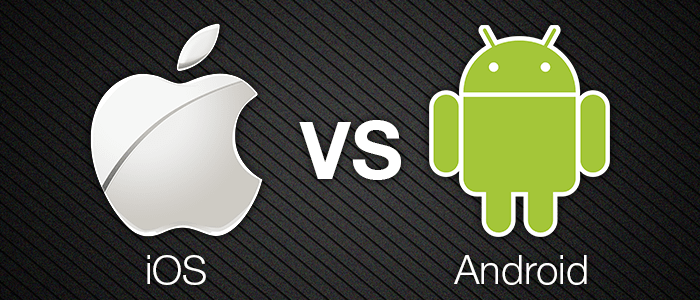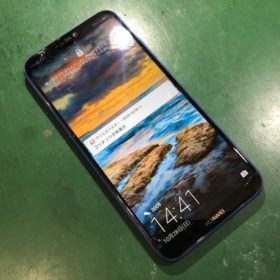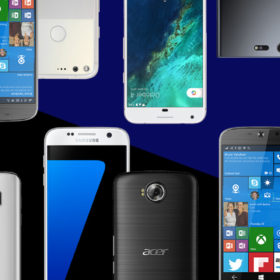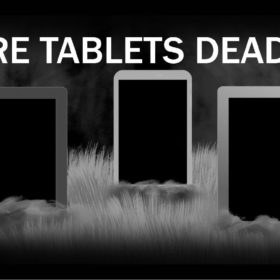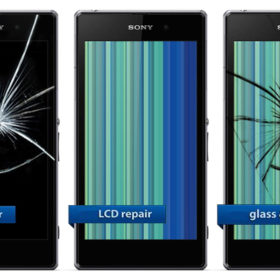Iphone VS Android
So you want a new phone, but you’re considering jumping ship from Android or iOS. But is the grass really greener on the other side, or should you stick with what you know? Here we outline the pros and cons of Android phones and iPhones. It’s Android vs iPhone: iOS vs Android.
See also: Best new phones
Before we get started, we must point out that this guide is intended as a brief overview to help you decide whether to choose an Android phone or an iPhone. It’s not meant to be an exhaustive comparison of every last feature, both in hardware and software, of each type of phone. And we also know that die-hard fans won’t be persuaded to switch – that’s not the aim of this article at all.
Update March 2017: The latest figures from StatCounter show that not only is Android used by way more people than iOS, but it’s also challenging Windows to be the most used OS in the world (for internet access, at least). In February 2017, Windows held a share of 38.6 percent, and Android came within striking distance at 37.4 percent. Apple’s iOS in the same period had a share of around 13 percent.
And according to GSM Arena, Samsung sold the most phones worldwide in 2016 with 308.5 million. Apple sold 215.5 million. Huawei is now no.3 with Xiaomi in fourth place.
Android vs iPhone: At a glance
iPhone
Pros
- Hardware and software both controlled and optimised by Apple
- Curated app store, fewer worries of malware
- Generally good support
Cons
- No expandable storage
- Walled-garden ecosystem
- Limited customisation
Android
Pros
- Open source, easily customised
- Expandable storage on many phones
- Wider choice of phones
Cons
- Higher chance of malware
- Interface not the same on all phones
- Patchy support
Android vs iPhone: Apps
We’ll get to the phones and operating systems shortly, but let’s deal with apps first. A few years ago, developers released their apps for iOS first, and Android users tended to have to wait a while (forever in some cases) before they could get them.
Now, aside from a few rare exceptions, apps are available on both platforms and typically there’s no wait for the Android version. The breadth of choice is excellent on both, and better than you’ll find with the competition: Microsoft’s Windows Phone (now Windows 10 Mobile) and Amazon’s Fire OS.
Most people should choose and Android phone or an iPhone since Microsoft appears to be fighting a losing battle with Windows phones, and Amazon has already given up with the only phone it ever made: you can no longer buy a Fire Phone.
Android vs iPhone: Hardware
The simple fact is that if you want an iPhone, you’ve a much easier choice than if you’re choosing an Android phone. That’s down to the fact that Apple tends to sell only three or four different models at any one time, with screen sizes ranging from 4in (the iPhone SE) up to the 5.5in iPhone 6S Plus (to be superseded by the iPhone 7 Plus in a couple of days. In the middle is the iPhone 6S, with its 4.7in screen.This also covers most budgets, with the SE starting at 8,000¥ from Apple (and cheaper if you shop around), up to the flagship which starts at 90,000¥.
Android phones, on the other hand, are so plentiful that it can be tricky choosing the right one. Prices range from 7,000¥ to around 120,000¥, and there are both well-known manufacturers such as Samsung and Sony, to brands you’ve never heard of.Are iPhones better than the best Android phones? Not necessarily, no. Some Android phones have better cameras than iPhones, while others have higher-resolution screens, or additional features that you don’t get with iPhones, such as NFC, heart-rate monitors and – crucially – expandable storage.
It’s possible to buy iPhones with a lot of storage, but not all models offer 128GB. And Apple charges a lot for extra storage. With many Android phones, you can insert a microSD card. Even a 64GB card can cost as little as 1,500¥, but you’ll pay much, much more for the equivalent extra space inside an iPhone.
There are advantages to having more internal storage, including the fact that you don’t have to worry about where your apps, music, video and other files are stored. You’re guaranteed good performance, too, which isn’t something that can be said about all the SD cards you can buy.
Android vs iPhone: Software
Android has improved in leaps and bounds and we’re now at the point where both iOS and Android are tied for the best mobile operating system.
Of course, this is much subjective as objective, and there will always be those that prefer iOS and those that think Android is best.
Here’s how they differ at a fundamental level.
Home screens
Most obviously, iPhone apps all sit on multiple home screens, just as they have always done. Sure, you can put them in folders and search for them, but your home screens can’t really be customised.
With Android, there’s a lot more freedom. You can make it like iOS, but equally you can shove all your apps in the app tray and leave your home screen to display a nice photo if you like, or add widgets to show the weather, world time and many other things.
Assistants
iPhones have Siri, Android phones have Google Now. Both do a similar job, but their capabilities differ. Google Now isn’t really a virtual assistant you can have a conversation with, whereas Siri does at least try.
Both can be used to set alarms, reminders, get directions, check cinema times and more and can send text messages and emails using dictation.
However, Siri tends to do a better job at understanding the task in hand and is less likely to dish up web search results for “tell my wife I’ll be home at 7”.
Plus, in iOS 10, Apple has opened up Siri to app developers, so should get a whole lot more useful. As with any voice assistant, though, you need to spend some time learning how to phrase your question or command in order to make it happen quickly.
Flexibility
It’s hard to know what to call this section, so we called it flexibility. It’s about what you can and can’t do: the limitations of each device.
With Android you can toggle an option to install software from unknown sources (so you can install the Amazon Underground app, for example), but on an iPhone you’re limited to what’s available in the App Store in your country. (Yes, you can jailbreak your iPhone to get around this, but it’s not a great idea for several reasons we won’t go into here.)
Plug an Android phone into a PC, and it acts like a hard drive. You can view, copy and delete files just like you would on a USB flash drive. That makes it supremely easy to transfer videos, music and documents from any computer.
Not so with an iPhone. Plug it in to a PC and it’s as if you’ve connected a digital camera. You can copy off photos and videos, but that’s it. The rest of the file system is walled off and you can only add videos, music and other files using iTunes or other specialist software.
The downside of Android’s flexibility is that phone manufacturers (most obviously Samsung and Huawei) change the look and feel of Android to the point where it feels like learning a new operating system when you pick up their phones.
Some manufacturers, including Motorola, and Google’s own Nexus phones have ‘standard’ Android, which many people prefer.
Buy an iPhone and you’re not limited to just Google or just Apple services. Every Google service (other than the Google Play store of course) is available on an iPhone and unlike in the past, there aren’t really any disadvantages of using Gmail, Google Calendar, Google Maps or YouTube on an iPhone. They’re better integrated on an Android phone, and the only real limitation on an iPhone is that – unlike on Android – you can’t choose which app is the default for email, calendar, web browsing etc.
This means you will always be fired off to Safari when you tap a web link in the email app, and not Google Chrome or Opera.
Conversely, very few Apple services are available on Android phones. You can’t use iMessage or FaceTime. Nor can you share photos or your location via iCloud. But there are plenty of cross-platform apps you can install to do all these things between iPhones and Android phones, including Whatsapp, Viber, Skype, Glympse, Google Photos, Facebook and more.
Security and privacy
Apple is well known for its stance of privacy and – in short – while there’s some data harvesting going on (mostly for reasons of convenience) – it isn’t going to give up your data when the FBI comes calling.
Google, on the other hand, is mainly after your data to make money. So if you value privacy, the iPhone is probably the better choice.
The recent FBI vs Apple case has also highlighted that iPhones are pretty darned secure. Data is encrypted and can’t be accessed without the passcode. And with some of the changes introduced since iOS 8, thieves are more likely to think twice about stealing an iPhone which is unusable without that same passcode.
Android phones can also be secure. As of version 6.0 Marshmallow, full-disk encryption was made mandatory, but phones which shipped with earlier versions may not support this.
Android is also more vulnerable to malware. Not only does Android have a much larger market share than iOS (roughly 80 percent versus iOS’s 20-odd percent) which makes it more attractive to cybercriminals, but it’s much easier to get that malware onto an Android phone because it isn’t locked down like an iPhone.
However, while Android malware and viruses do exist you can protect an Android phone by only installing apps from the Google Play store and by running an antivirus app.
Android vs iPhone: which is best?
You may have come to this article specifically to answer this question, but the bad news is that there’s no easy answer. The best depends on your priorities and needs.
If you need a phone which costs less than 50,000¥, you’re going to have to choose Android (or buy a second-hand iPhone).
Sometimes it comes down to the other gadgets you or your friends and family own. If you desperately want an Apple Watch, or you like the idea of a controlled, safe (even private) ecosystem, then buy an iPhone. The iPhone plays very nicely with iPads and Macs, so if you or other family members have these, you’ll (probably) be happiest with an iPhone.
If you want a Google Wear watch, you’ll have the best experience with an Android phone. Similarly, if you’re technically minded or like to customise your phone, you’re going to prefer Android as it’s so much more flexible than an iPhone.
